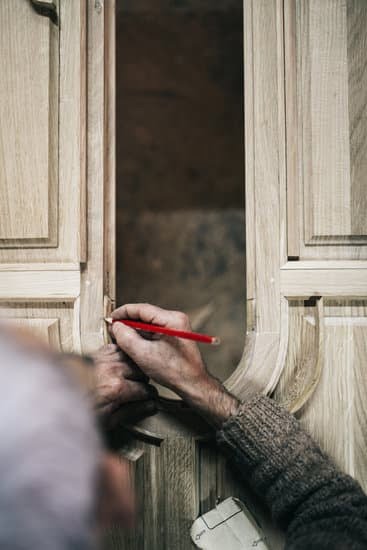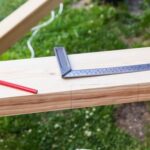Do you need a jointer for woodworking? Understanding the role of jointers in woodworking is essential for anyone looking to pursue this craft. Whether you’re a beginner or an experienced woodworker, knowing how to use a jointer and when to use it can greatly impact the quality of your projects. In this article, we will explore the purpose of jointers, the different types available, and the benefits they offer in woodworking.
A jointer is a crucial tool in any woodworker’s arsenal, as it helps create flat surfaces on wooden boards by shaving off irregularities and rough edges. This process, known as “jointing,” allows for seamless joining of multiple pieces of wood to create furniture, cabinets, or other woodworking projects. Understanding how to properly use a jointer can make a significant difference in the final outcome of your woodworking projects.
In addition to exploring the function and benefits of using a jointer in woodworking projects, we will also compare and contrast the various types available, such as benchtop, handheld, and stationary jointers. By understanding their differences and capabilities, you can make an informed decision when selecting the best jointer for your specific woodworking needs.
The Purpose of Jointers
A jointer is a crucial tool in the woodworking process, as it allows woodworkers to create smooth, flat surfaces on their lumber. The primary purpose of a jointer is to flatten one face and square up one edge of a piece of wood, allowing for precise and accurate joinery. This is essential for creating strong, stable joints in woodworking projects.
One of the main benefits of using a jointer is the ability to produce boards with straight edges, which are essential for creating tight-fitting joints. By removing any twists, bows, or cups from the surface of the wood, a jointer ensures that the resulting pieces fit together seamlessly, resulting in high-quality finished products.
Improving Precision and Accuracy
Using a jointer also helps improve the precision and accuracy of woodworking projects. By starting with flat, square boards, woodworkers can more easily achieve the precise measurements and dimensions needed for their designs. This level of accuracy is especially important when joining multiple pieces together to create furniture or other wooden structures.
Creating Smooth Surfaces
Another significant benefit of using a jointer is the ability to create smooth surfaces on pieces of wood. Once flattened and squared on the jointer, boards can be used as-is or further processed through other tools such as planers or routers to achieve an even smoother finish. This results in professional-looking woodworking projects that are visually appealing and functional.
Types of Jointers
When it comes to woodworking, having the right tools can make all the difference in the quality of your finished projects. Jointers are a crucial tool for creating smooth, flat surfaces on your wood pieces, but there are different types of jointers to choose from. Understanding the differences between benchtop, handheld, and stationary jointers can help you determine which one is best suited for your specific woodworking needs.
Benchtop jointers are small and portable, making them a great option for woodworkers with limited space. These jointers are designed to sit on top of a workbench and are generally more affordable than their larger counterparts. Handheld jointers, on the other hand, offer the ultimate flexibility in terms of maneuverability.
They allow you to bring the tool to your workpiece rather than bringing the workpiece to the tool. Finally, stationary jointers are larger and more powerful, making them ideal for professional woodshops or serious hobbyists who have plenty of space to dedicate to their woodworking tools.
Each type of jointer has its own set of advantages and limitations, so it’s important to consider factors such as your available workspace, budget, and the size of your typical woodworking projects before deciding which type of jointer is right for you.
| Jointer Type | Advantages | Limitations |
|---|---|---|
| Benchtop Jointer | Portability; Affordability | Narrow width capacity; Less powerful |
| Handheld Jointer | Maneuverability; Flexibility | Less precision; Not suitable for large projects |
| Stationary Jointer | Precision; Power | Large footprint; Higher cost |
By considering these factors and understanding the pros and cons of each type of jointer, you can make an informed decision about which one will best meet your needs in woodworking projects.
Remember that no matter what type of jointer you choose, following proper safety protocols is crucial when using this tool in your workshop. Always wear appropriate safety gear such as goggles and ear protection when operating a jointer to avoid accidents or injuries.
Jointer vs Other Tools
When it comes to woodworking, jointers and planers are two essential tools that can either be used separately or in combination to achieve the desired results. Both tools serve different purposes and understanding their differences is crucial for any woodworker.
Jointer Functionality
A jointer is specifically designed to flatten one face of a board and create a straight edge along one edge of the board. This process is known as “jointing” and it is essential for creating surfaces that are perfectly flat and edges that are perfectly straight. The jointer achieves this by using rotating blades that shave off uneven or rough sections of the wood, resulting in a smooth, even surface.
Planer Functionality
On the other hand, a planer serves the purpose of creating boards with an even thickness throughout their entire length. It effectively reduces the thickness of a board while maintaining an even surface. Planers are commonly used to prepare rough lumber for use in woodworking projects, providing uniform thickness for easy cutting, shaping, and joining.
Given these functions, it is important to note that while a jointer can create flat surfaces and straight edges, it cannot change the thickness of a board. Conversely, a planer can make boards uniform in thickness but cannot create perfectly flat surfaces or straight edges like a jointer can.
Knowing when to use each tool ultimately depends on the specific needs of the woodworking project at hand. If you have rough lumber that needs to be flattened and squared before proceeding with further processing, then using a jointer would be appropriate. On the other hand, if you need boards to have consistent thickness throughout their length, then employing a planer would be necessary. Understanding these distinctions will lead to better woodworking outcomes.
Jointer Safety
When working with woodworking tools, safety should always be a top priority. This is especially true when using a jointer, as it can pose certain risks if not used properly. Here are some important tips and best practices to keep in mind when using a jointer in your workshop:
- Wear appropriate safety gear: When operating a jointer, it’s crucial to wear safety goggles or a face shield to protect your eyes from any wood chips or debris that may fly up during the cutting process. Additionally, wearing hearing protection can help reduce the noise level produced by the machine.
- Keep the work area clear: Before using a jointer, make sure that the workspace is clean and free of any clutter or obstacles. This will help prevent accidents and ensure that you have enough space to maneuver the wood and operate the machine safely.
- Use push blocks and push pads: To avoid injuries from coming into contact with the jointer’s cutterhead, it’s essential to use push blocks or push pads to guide the wood through the machine. These tools provide a safe way to apply pressure and keep your hands at a distance from the spinning blade.
By following these safety tips and best practices, you can minimize the risk of accidents while using a jointer in your woodworking projects. Whether you’re an experienced woodworker or just starting out, prioritizing safety in the workshop is key to enjoying your craft for years to come. Always remember to read and understand the manufacturer’s instructions for your specific jointer model before use. Safety first.
Choosing the Right Jointer
When it comes to woodworking, having the right tools for the job is essential for achieving high-quality results. One important tool to consider adding to your workshop is a jointer. But with different types and models available, how do you know which one is the best for your woodworking needs? Here are some factors to consider when selecting the best jointer for your projects:
- Size: Consider the size of the boards you typically work with. If you often work with larger pieces of wood, a larger jointer may be more suitable for your needs.
- Space: Take into account the available space in your workshop. If space is limited, a benchtop jointer may be a more practical option than a larger stationary model.
- Budget: Determine how much you are willing to invest in a jointer. Prices can vary significantly depending on the type and features of the jointer, so it’s important to establish a budget before making a purchase.
- Features: Consider what features are most important to you. For example, some jointers come with spiral cutterheads for smoother cuts, while others may have adjustable tables for added versatility.
Ultimately, choosing the right jointer for your woodworking projects requires careful consideration of these factors to ensure that you find a tool that meets your specific needs and preferences. By taking the time to evaluate these aspects, you can make an informed decision when it comes to selecting the best jointer for your workshop.
In summary, while there are various types and models of jointers available on the market, finding the right one involves assessing factors such as size, space requirements, budget, and desired features. So before making a purchase decision, take the time to research and compare different options to ensure that you find a jointer that aligns with your woodworking needs. With the right tool at your disposal, you can improve the accuracy and quality of your woodworking projects.
Jointer Techniques
Using a jointer in your woodworking projects is essential for achieving smooth and flat surfaces on your wood pieces. Whether you are making furniture, cabinets, or other woodworking projects, the use of a jointer can greatly improve the quality of your finished product. But how do you go about using a jointer to achieve these smooth and flat surfaces?
The first step in using a jointer is to ensure that the tool is set up correctly. This involves adjusting the infeed and outfeed tables, as well as setting the depth of cut to remove just enough material for a smooth surface. It’s important to carefully read the manufacturer’s instructions for your specific jointer model and make any necessary adjustments before starting.
Once the jointer is properly set up, it’s time to prepare your wood for the jointing process. Ensure that one face of the board is perfectly flat before moving on to using a jointer. Then, run this face along the jointer’s fence while applying even pressure to achieve consistent results across the entire length of the wood piece.
After running each face along the jointer and achieving a straight edge, it’s important to check for any imperfections or snipe that may have occurred during the process. Making any necessary adjustments or running the board through the jointer again can help correct these issues and result in a perfectly smooth and flat surface.
| Jointer Techniques | Using a Jointer |
|---|---|
| Properly setting up the jointer | Adjusting infeed/outfeed tables, depth of cut |
| Preparing wood for jointing | Ensuring one face is completely flat |
| Running boards through the jointer | Checking for imperfections or snipe and making adjustments as needed |
Conclusion
In conclusion, the use of jointers in woodworking projects cannot be overstated. Whether you are a novice or an experienced woodworker, having a jointer can greatly improve the quality and precision of your work. From achieving smooth and flat surfaces to ensuring accurate edges for joining pieces together, a jointer is an essential tool in any woodworking workshop.
When considering whether you need a jointer for woodworking, it’s important to evaluate the scope and scale of your projects. While some woodworkers may find alternatives or workarounds, having a jointer can streamline the process and elevate the final result. The ability to accurately square and straighten rough lumber simply cannot be matched by other tools, making the investment in a jointer well worth it for those serious about their craft.
Ultimately, choosing the right jointer for your woodworking needs will depend on various factors such as budget, space constraints, and the scale of your projects. Whether you opt for a benchtop, handheld, or stationary jointer, it’s crucial to prioritize safety and proper technique when using this powerful tool. With careful consideration and thorough understanding of how jointers function, you can elevate your woodworking skills and achieve professional-level results.
So, do you need a jointer for woodworking? The answer is clear: if you are committed to producing high-quality woodwork, then having a jointer will undoubtedly enhance your craft.
Frequently Asked Questions
Can I Get by Without a Jointer?
It is possible to get by without a jointer, but it may be more difficult to achieve smooth and straight edges on your woodworking projects. A jointer helps to flatten and straighten the edges of boards, making them easier to work with.
Does My Shop Need a Jointer?
Whether your shop needs a jointer depends on the type of woodworking you do. If you often work with rough-sawn lumber or need precise edges for your projects, then a jointer can be a valuable addition to your shop. It helps in creating flat and smooth surfaces, which can be crucial for certain woodworking tasks.
Do You Need Both a Jointer and a Planer?
While it is possible to use just a jointer or just a planer for woodworking projects, having both tools offers greater flexibility and efficiency. The jointer is used for creating flat surfaces and straight edges, while the planer is used for achieving consistent thickness throughout a board.
Both tools complement each other and are often used in sequence for preparing wood for projects. Having both can greatly improve the quality of your woodworking results.

Hi everyone! I’m a woodworker and blogger, and this is my woodworking blog. In my blog, I share tips and tricks for woodworkers of all skill levels, as well as project ideas that you can try yourself.





